These dairy free cinnamon rolls made without milk and butter and with water and oil instead.
They are so sweet and cinnamony and you'll be hard pressed to tell that they are dairy free.
Also, unlike most cinnamon rolls, these dairy free cinnamon rolls are incredibly light and fluffy. Serve them as a dessert or just treat yourself to one any time of day!
Living in Israel, I’m surrounded by an amazing food culture with wonderful rich foods and pastries like chocolate rugelach and chocolate babka. That said, there are foods that I grew up with that I often miss.
In fact, on my first visit back to the States, I made sure to eat as many foods I missed as possible. Unfortunately though, there always seem to be more to miss.
One of the things my brother Ari missed most was cinnamon rolls. So, I decided to make them for him.
While these are dairy free cinnamon rolls, you won't feel like you're missing the dairy at all. They are light, fluffy, and sweet. But not too sweet!
Ari couldn’t get enough and gave them a ten out of ten. Personally, they totally satisfied my cinnamon roll craving - at least for a little while.
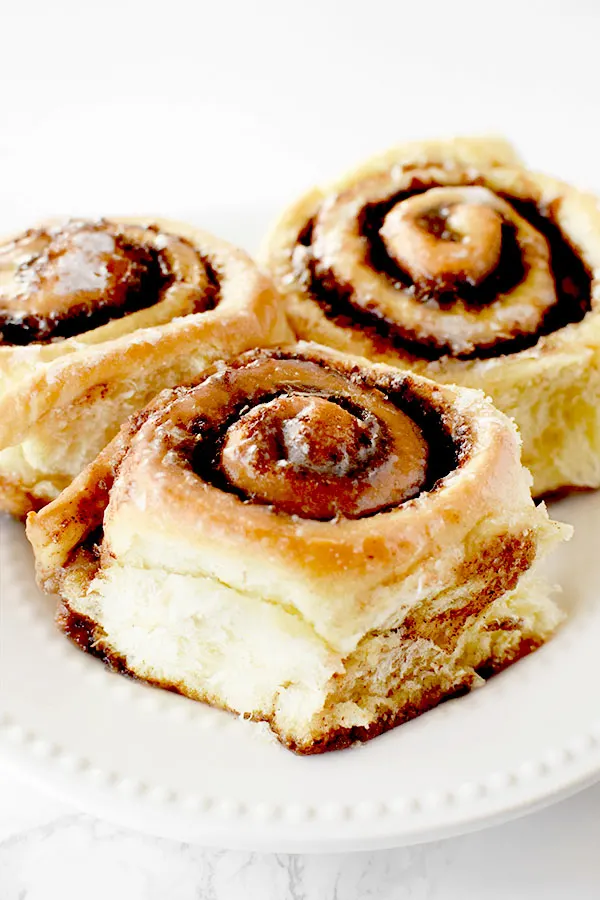
Another dairy free dessert you may love are my chocolate sweet rolls. They are like cinnamon rolls but with a rich chocolate filling.
About Dairy Free Cinnamon Rolls
Cinnamon rolls dairy typically because they are typically made with milk and butter and are topped with cream cheese frosting or a glaze that is made with milk.
However, to make cinnamon rolls dairy free you can replace the milk with dairy free milk or make them using water.
You also can substitute the butter for dairy free butter, kosher margarine, or oil (see notes for oil to butter conversion).
This dairy free cinnamon roll recipe uses water and oil instead of milk and butter.
Cinnamon buns vs cinnamon rolls
The terms "cinnamon bun" and "cinnamon roll" are often used interchangeably, but some people make distinctions and use "cinnamon bun" to describe a softer, more cake-like version, and "cinnamon roll" for a fluffier, yeastier texture.
BREAD FLOUR VS ALL-PURPOSE FLOUR
Bread flour has a higher protein content than all-purpose, which helps with gluten development.
This creates a chewy texture and heavier and denser bread. This can be great in recipes like bread bowls. However, it is less desirable in breads like challah bread, which you want to be light and fluffy.
All-purpose flour has a lower protein content, but can generally be substituted for bread flour.
Can I use whole wheat flour instead?
Generally, if you want to use whole wheat flour in bread, it's recommended to replace up to half of the all-purpose flour called for with whole wheat flour.
HOW TO MEASURE FLOUR AND OTHER DRY INGREDIENTS
The best way to measure dry ingredients is with a scale. However, this is not commonly done in the United States, where dry measuring cups are used instead.
To measure most dry ingredients, first spoon them into a dry measuring cup and then level off the measuring cup with an upside-down butter knife.
Make sure not to pack it down because it can lead to using more of the ingredient than called for.
The exception is brown sugar. To measure brown sugar, pack it into the measuring cup and then level off any excess.
To measure chocolate chips, nuts, or dried fruit, just pour them in and then level them off.
DRY VS LIQUID MEASURING CUP
Dry measuring cups are a set of cups that often come with measuring spoons. Each cup is a different measurement just like each spoon is a different measurement.
Liquid measuring cups, on the other hand, are cups that have measuring lines on the side to mark the measurements.
The problem with using liquid measuring cups to measure dry ingredients (like flour and cocoa) is that they are powders. So, as you shake the cup to level them off, the powders settle and you end up with more than you need.
I tested this with a friend who didn't believe me and we ended up with a number of tablespoons more than the recipe called for.
WHY sift Powdery Ingredients
There are a number of benefits to sifting powdery ingredients like flour and cocoa.
First of all, flour is often sifted before use to aerate it and remove any lumps. This helps in achieving a lighter texture in baked goods.
Secondly, if you measure flour that's just been sifted, you can get a more accurate measurement than from flour that's been packed tightly in a bag.
In addition, sifting dry ingredients together, such as flour, cocoa, and baking powder, helps make sure they're evenly dispersed.
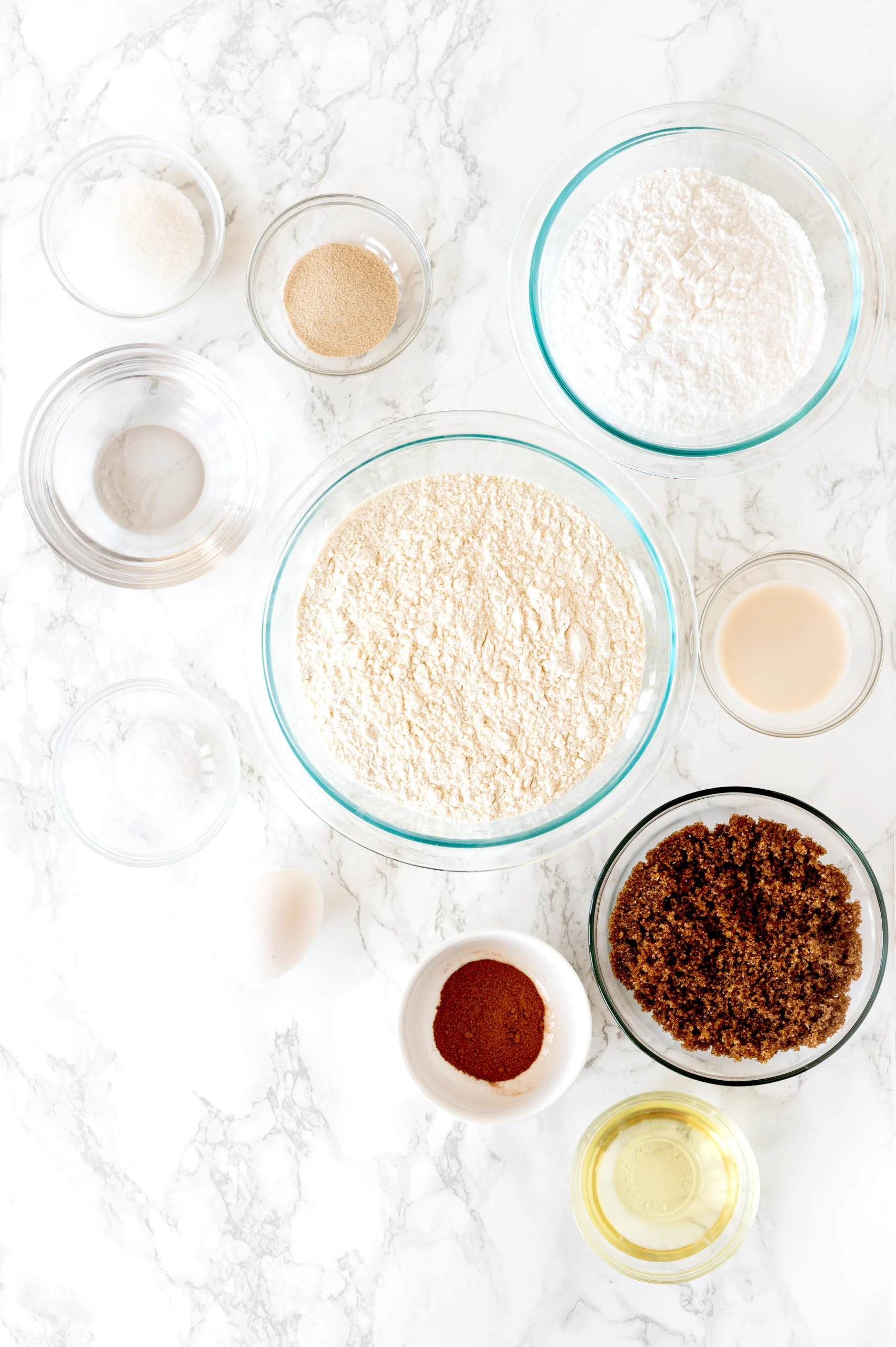
Yeast
Yeast is used in bread and other baked goods to create a light and airy texture.
It does this by fermenting sugars, which causes dough to rise.
In most cases, the yeast is dormant until activated or "bloomed" by being rehydrated and woken up. Usually, this is done with warm liquid and a small amount of sugar.
Once activated, it begins the proofing process.
"Proofing" is the fermentation process where yeast eats the sugar and forms bubbles, indicating that it's alive and ready to leaven the dough.
Types of YEAST
There are seven different types of yeast used for baking. However, only five are relevant to home bakers, and just about all my recipes only use instant yeast.
WILD YEAST
Wild yeast is found naturally in the air. This type of yeast is used for sourdough breads, and in order to use it, you need to make a sourdough starter.
FRESH YEAST
Fresh yeast, cake yeast, block yeast, wet yeast, or compressed yeast, is found in small, foil-wrapped cubes.
It is far less popular with home bakers because it’s highly perishable. However, it is still widely available for commercial use and is still used by home bakers in some countries.
The benefits of using it is that it’s easier to measure and has the most leavening power.
If you want to use fresh yeast in this recipe, then for every 1 teaspoon of instant dry yeast, you'd need 17 grams (or 0.6 ounces) of fresh yeast.
Make sure to bloom it before using it in this recipe.
ACTIVE DRY YEAST
Active dry yeast looks like large-grained powder, mainly used by home bakers in the United States.
It has a much longer lifespan than compressed yeast, lasting up to a year at room temperature and more than a decade if frozen.
The main downside of using this is that a lot of the yeast is already dead, so you need more of it than other yeasts. This can cause an undesired yeast flavor.
If you want to use active dry yeast in this recipe, then for 1 teaspoon of instant dry yeast, you need 1 ¼ teaspoons of active dry yeast.
Make sure to bloom it first before using it in this recipe.
INSTANT YEAST
Instant yeast looks the same as active dry yeast. However, it does not need to be proofed before using.
Instead of having to be activated in warm liquid first, it can be added as is when making the dough.
It is more perishable than active dry yeast, lasting only 2 to 4 months at room temperature, but lasts for years if kept in the freezer.
This is my favorite type of yeast to use because it lasts longer than fresh yeast, and you need less of it than active dry yeast.
RAPID-RISE YEAST
Rapid-rise yeast is often specifically marketed toward users of bread machines. It’s essentially instant yeast with a smaller grain. The smaller granules allow it to dissolve faster in the dough and therefore rise faster.
While most baking experts believe that the bread flavors aren’t as developed by using this yeast, others feel it makes little difference.
Activating Yeast
The purpose of activating yeast is to make sure that the yeast cells are alive. This is a necessary step for most types of yeast.
To activate the yeast, mix the yeast with warm liquid (usually around 110°F or 43°C) and a small amount of sugar. The sugar provides a food source for the yeast. After a few minutes, the mixture should become frothy, indicating that the yeast is active and ready for use.
WHY ACTIVATE OR BLOOM INSTANT YEAST?
"Activating" and "blooming" yeast are different terms for the same process.
While instant yeast does not actually need to be bloomed, I do it anyway because it helps troubleshoot if any problems come up.
By blooming the yeast first, you know it is active. So, if the dough has trouble rising, you know it’s not the yeast.
This is particularly useful when you don’t have a “warm” place to let it rise.
While the sugar content may matter for most types of yeast, it doesn't seem to make a difference for instant yeast.
When I activate instant yeast, I usually mix all the liquid, sugar, and yeast together in the bowl. Once it froths up, I add the rest of the liquid ingredients followed by the rest of the dry ingredents.
How to Bloom Yeast
To bloom, place the yeast, lukewarm water, and sugar together in the bowl. Stir and wait for it to activate.
The water must be warm because hot water will kill the yeast and cool water won't activate it.
If you are using fresh yeast, make sure to break it up with a fork once it is in the water.
You know the yeast is activated when foam appears on the surface. This can take up to 10 minutes.
Storing Yeast
Once opened, store in an airtight container and keep in a cool, dry place.
If you keep the yeast in the freezer, it will stay good for years.
HOW LONG DOES IT TAKE DOUGH TO RISE?
How quickly dough rises depends on how warm the environment it is rising in is.
If you put it in the fridge for instance, it could take 8 hours or so. If you leave it on the counter in a comfortably warm room, it's usually 45 minutes to 1 hour.
However, sometimes dough can take up to 2 hours to rise depending on a variety of factors.
HOW TO RISE BREAD FASTER
To speed up the rising process, you can preheat the oven to its lowest temperature and turn it off.
Then, cover the dough with a damp towel and place it in the oven.
This trick works for me every time. On occasion, I may need to remove the dough and preheat the oven another time or two, but usually just once does the trick.
Some bakers feel it doesn’t allow flavors to really develop. Personally, I've never noticed much of a difference.
PUNCHING DOUGH DOWN
"Punching" is a bit of a strong word. Yeast is a delicate living thing, so you actually need to treat it with care.
What you’re really doing is lightly pressing down the dough through the center with your fist. This removes gases that have formed during the first rise.
By doing this, you are also bringing the yeast, sugar, and moisture back together, which is important for the second rise as the yeast feeds on the sugar.
After you “punch” down the dough, you should pull the edges of the dough to the center. Then, take the dough out of the bowl and place it on a lightly floured board. Next, scrape out the remaining dough from the bowl using a rubber spatula.
Lastly, shape your dough into a ball, and if desired, you can knead the dough two or three times to release additional air bubbles.
I like kneading my dough a few times by hand after the mixer has done most of the work. This creates an extra smooth crust.
THE SECOND RISE
The second rise allows the yeast to feed longer on the sugar. This allows the bread to become larger, have a better crumb, and develop a better flavor.
Also, if you were to let it rise only once, punch it down, shape it, and stick it in the oven, your bread would rise somewhat, but not enough for it to become fluffy.
Overproofing Dough
Letting the dough rise is known as "proofing the dough." Overproofing is when you let the dough rise too much.
If you let your dough rise too much, it will seem big and beautiful at first, and then it will fall and become dense after it's removed from the oven.
If you've found that you left the dough to rise to much larger than double its original size, punch it down, reshape it, and then let it rise to its proper size.
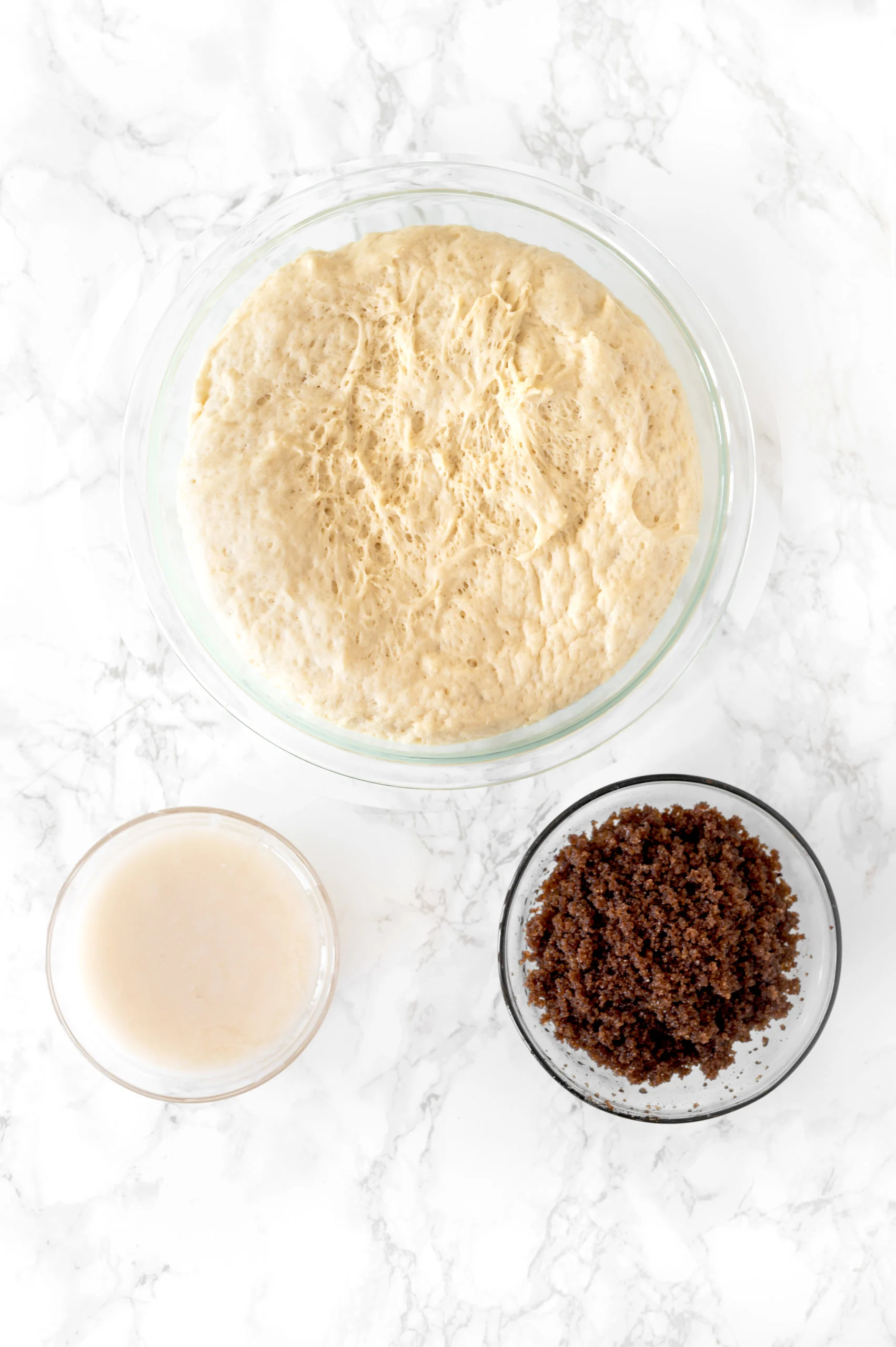
How long can I keep dough in the refrigerator?
You can refrigerate dough for up to 2-3 days. After that, the yeast may lose potency.
Keep in mind, the dough will continue to rise slowly during that time.
Can I freeze unbaked dough for later use?
You can freeze dough in airtight freezer container for up to four weeks.
When you're ready to use it, first thaw the dough in the refrigerator overnight.
It will take up to twice as long for the dough to rise as it would if it hadn’t been frozen.
Why did my dough turn out dense and heavy?
This can be due to overkneading, not letting it rise completely, overproofing, or using too much flour.
Baking with Humidity
Humidity can have a big impact on how your baked goods come out.
This is because when humidity is extremely high (think 70 percent or more), baking ingredients like flour, sugar, salt, baking powder, and baking soda soak up moisture from the air.
This can negatively impact the outcome of your cakes, cookies, yeast breads, and quick breads.
There are some things you can do to try to save your baking.
Try to counterbalance the additional moisture
To help counterbalance the additional moisture your dry ingredients soak up from the air, try reducing the amount of liquid in the recipe by about one quarter.
If the batter or dough looks too dry once all the ingredients are mixed together, add additional liquid a tablespoon at a time until you have the desired consistency.
This is not usually possible to do for cookies, but it does work for cakes and breads.
Store Ingredients in the Fridge
If flour and sugar are stored in the refrigerator or freezer rather than in a cupboard or pantry, they are better protected from humidity.
As an added benefit, keeping these ingredients cool also helps keep them fresher longer, in addition to helping them stay bug-free.
For the best results, let them warm to room temperature before using.
Bake for Longer
If you bake your goodies for a few extra minutes, it can help the liquid to cook off.
To avoid overbaking, continue testing for doneness every couple of minutes for breads, quick breads, cakes, cupcakes, and muffins. Cookies, on the other hand, need to be checked every minute.
Use Air Conditioning
To help lower humidity levels on humid summer days, air condition the room for at least an hour before you start baking.
Cooler air isn’t able to hold as much moisture as warm air.
Store your baked goods in an airtight container
Humidity can also ruin your fresh-baked goods because when they are left out, they can absorb moisture.
To avoid this, store them in an airtight container or resealable bag.
BAKING WITH OIL
Baking with oil produces a moister and tenderer texture compared to that of baked goods made with butter.
Cakes, cupcakes, muffins, and quick breads also tend to bake up taller with a better crumb and stay moist and tender much longer than recipes made with butter.
Also, since oil weighs less than butter, baked goods made with oil have a lighter texture than those made with butter.
In addition, butter is usually only 80% fat, whereas oil is 100% fat. As a result, the water that's present in butter strengthens the gluten in the flour, making it more dense and less tender than baked goods made with oil.
Oil is often used in recipes where a lighter and airier texture is desired or in recipes that call for both oil and butter, in order to have the benefits of oil while keeping the butter flavor.
Which Type Of Oil to Use
I use neutral oils like canola oil, safflower oil, and vegetable oil. You can also use stronger oils like olive oil and coconut oil, but they may change the taste somewhat.
Is it better to use canola oil or olive oil?
Canola oil is relatively cheap and, due to its lack of flavor and high smoke point, is very versatile.
Olive oil, on the other hand, is healthier. Also, its stronger flavor makes it preferable in recipes such as focaccia, which require its distinct taste.
Baking with Oil Conversion Chart
If you want to convert your butter recipes to oil recipes, take a look at my baking with oil - butter to oil conversion chart.
How to store Oil
Store oils in a cool, dark place to prevent them from becoming rancid.
If refrigerated, some oils, like olive oil, may solidify, but will return to a liquid state at room temperature.
Coconut oil begins to solidify in temperatures under 76ºF or 25ºC.
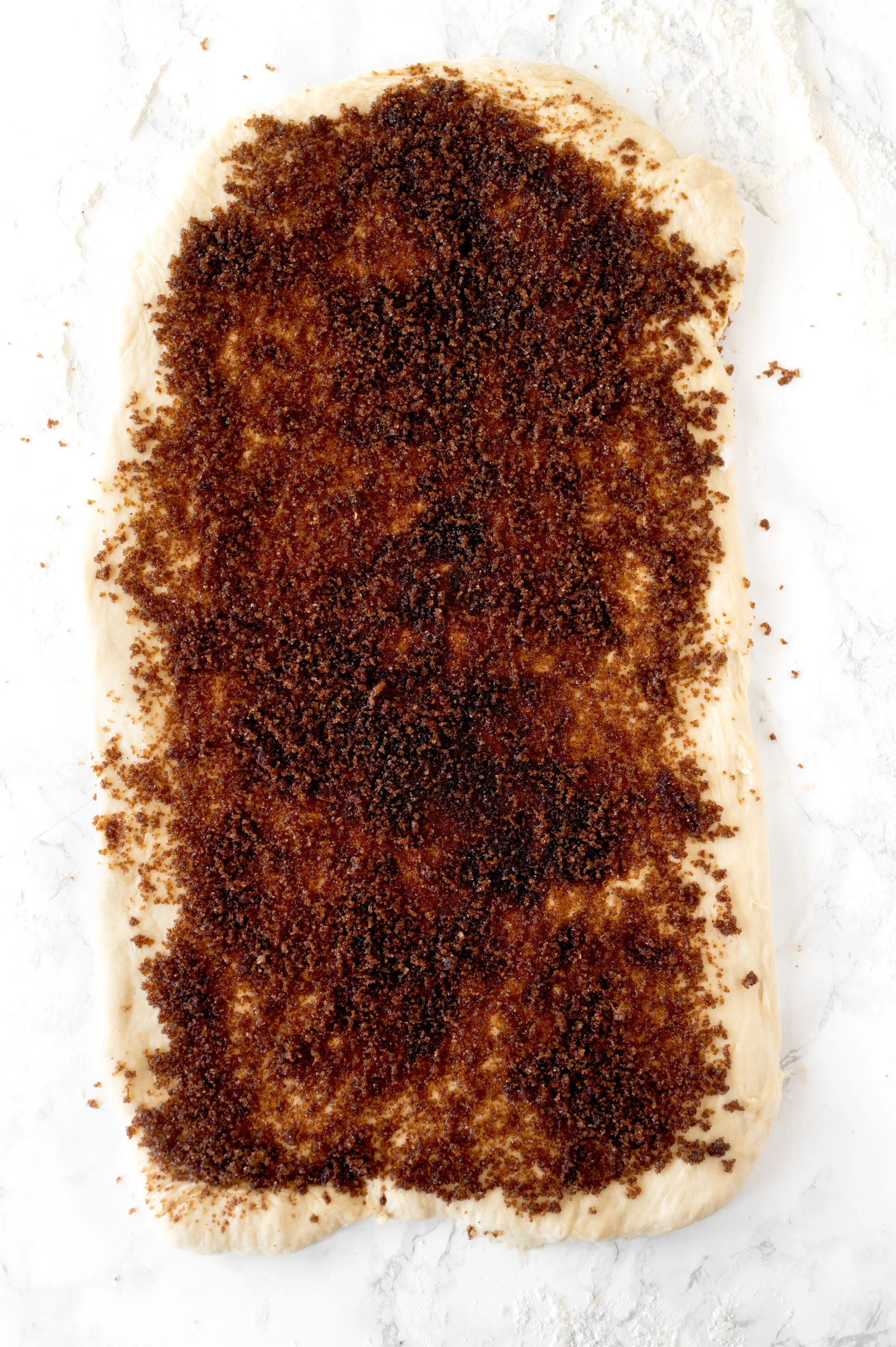
DO EGGS NEED TO BE AT ROOM TEMPERATURE?
The short answer is "no." While a side-by-side comparison shows that baking with eggs at room temperature makes a better crumb, it’s not otherwise noticeable.
What are Eggs used for?
Eggs do three things in most recipes: they help bind the ingredients together, act as a mild leavening agent, and they add moisture.
ARE EGGS DAIRY?
No, eggs are not dairy. Dairy is milk and any food products made from milk, including cheese, cream, butter, and yogurt.
So, while eggs are an animal product, they are not dairy. In fact, eggs fall under the protein food group.
How to tell if your eggs are still good
Fill a glass with cool water and submerge the eggs.
If the eggs sink to the bottom and lay flat on their side, they're still fresh.
If they sink, but stand on one end at the bottom of the glass, the eggs are not as fresh but still good.
An egg that floats to the top is likely spoiled.
EGGLESS OPTION
Eggs can be substituted with ¼ cup of unsweetened apple sauce per egg. This means that for recipes calling for 2 eggs, you’d need ½ cup of unsweetened apple sauce.
The reason applesauce makes a good binder is that it's high in pectin. Pectin is a naturally occurring starch in fruits and berries that acts as a thickening agent and stabilizer in food.
This happens when combined with sugar and acid (if the fruit or berry isn't naturally acidic).
Just keep in mind that it may change the flavor slightly.
Sugar
The primary role of sugar is to be a sweetener. However, sugar also contributes to the tenderness and moistness of the baked good by absorbing and retaining moisture and helps create the golden brown color when baking as it caramelizes.
Recipes with more sugar often result in softer, moister textures. However, I learned the hard way that too much sugar leads to a sticky mess.
When it's heated, sugar caramelizes, resulting in a rich, complex flavor and a brown color. This adds both flavor and color to baked goods and is also the process in which caramel sauce, dulce de leche, caramel candies, and regular candies are made.
When used in recipes containing yeast, the sugar is eaten by the yeast, producing carbon dioxide and causing the dough to rise.
Sugar also acts as a preservative in jams, jellies, and fruit preserves by reducing water activity and preventing microbial growth.
There are many different types of sugar, including white sugar, brown sugar, vanilla sugar, powdered sugar, turbinado sugar, and demerara sugar.
When a recipe calls for “sugar” without specifying anything else, it's referring to regular white sugar.
White Sugar
White sugar (sometimes called granulated sugar, table sugar, or white granulated sugar) is made of either beet sugar or cane sugar, which has undergone a refining process.
It is the easiest to find and most commonly used.
Brown Sugar
Brown sugar is white sugar with molasses added to it.
It is commonly used in chocolate chip cookie recipes, and it’s rare for a recipe that calls for brown sugar not to also call for white sugar as well.
When a recipe calls for “brown sugar” but doesn’t specify what type (light or dark), it is referring to light brown sugar.
In my recipes, you can use whatever type of brown sugar you have on hand, whether it is dark brown sugar, light brown sugar, or demerara sugar - which is very common in Israel.
Just keep in mind that the flavor and color will be slightly different, depending on what you choose to use.
Turbinado Sugar
Turbinado sugar is better known as "raw sugar." But, despite this name, the sugar is not really “raw.”
Instead, it's partially refined sugar that retains some of the original molasses.
The term "raw sugar" may also give off the impression that it is somehow healthier.
In reality, turbinado sugar is nutritionally similar to white sugar.
Demerara Sugar
Demerara sugar is very popular in Israel and is especially delicious in tea, but is also used for baking.
Unlike white sugar, demerara sugar undergoes minimal processing and retains some vitamins and minerals.
However, it is still not much healthier than white sugar.
Vanilla Sugar
Vanilla sugar is not very common in the States. However, it is common in Israel and parts of Europe.
This is sugar that sat for an extended period of time with vanilla beans, giving it a vanilla flavor.
Caster Sugar
This type of sugar is common in the United Kingdom.
It has a grain finer than white (granulated) sugar and larger than powdered sugar.
Caster sugar is often called for in recipes for delicate baked goods like meringues, souffles, and sponge cakes.
You can use a 1:1 conversion rate between caster sugar and white (granulated) sugar.
Powdered sugar
Powdered sugar, sometimes known as confectioners’ sugar, is a sugar with a powdered texture.
This sugar is rarely used for baking. Instead, it is used for dusting desserts and making frosting, icing, and glazes.
In some countries, you can also find powdered vanilla sugar.
It is made the exact same way regular vanilla sugar is made. However, the sugar used is powdered instead of granulated.
Vanilla Extract vs Vanilla sugar
In my recipes, I don’t specify what kind of vanilla to use.
The reason for this is that in the States, vanilla extract is exclusively used.
Meanwhile in Israel, along with many European countries, vanilla sugar is common.
In most, if not all recipes, both vanilla extract and vanilla sugar can be used.
In recipes where vanilla sugar can be used instead of extract, you can replace them 1:1.
Replacing Sugar with Honey
If you’d prefer to use honey instead of sugar, you can do so with pretty good results.
Honey can be two or even three times as sweet depending on the honey, so for every 1 cup of sugar, you can use ½ to ⅔ cup honey.
Since honey adds liquid, you need to remove some to balance it out. For every cup of honey, remove a ¼ cup of liquid.
Also, it burns faster than granulated sugar, so you want to lower the baking temperature by 25 F. In addition, check it early and often to avoid burning or overbaking.
How to Store Sugar
Sugar should be stored in an airtight container to prevent clumping and moisture absorption, and kept in a cool, dry place.
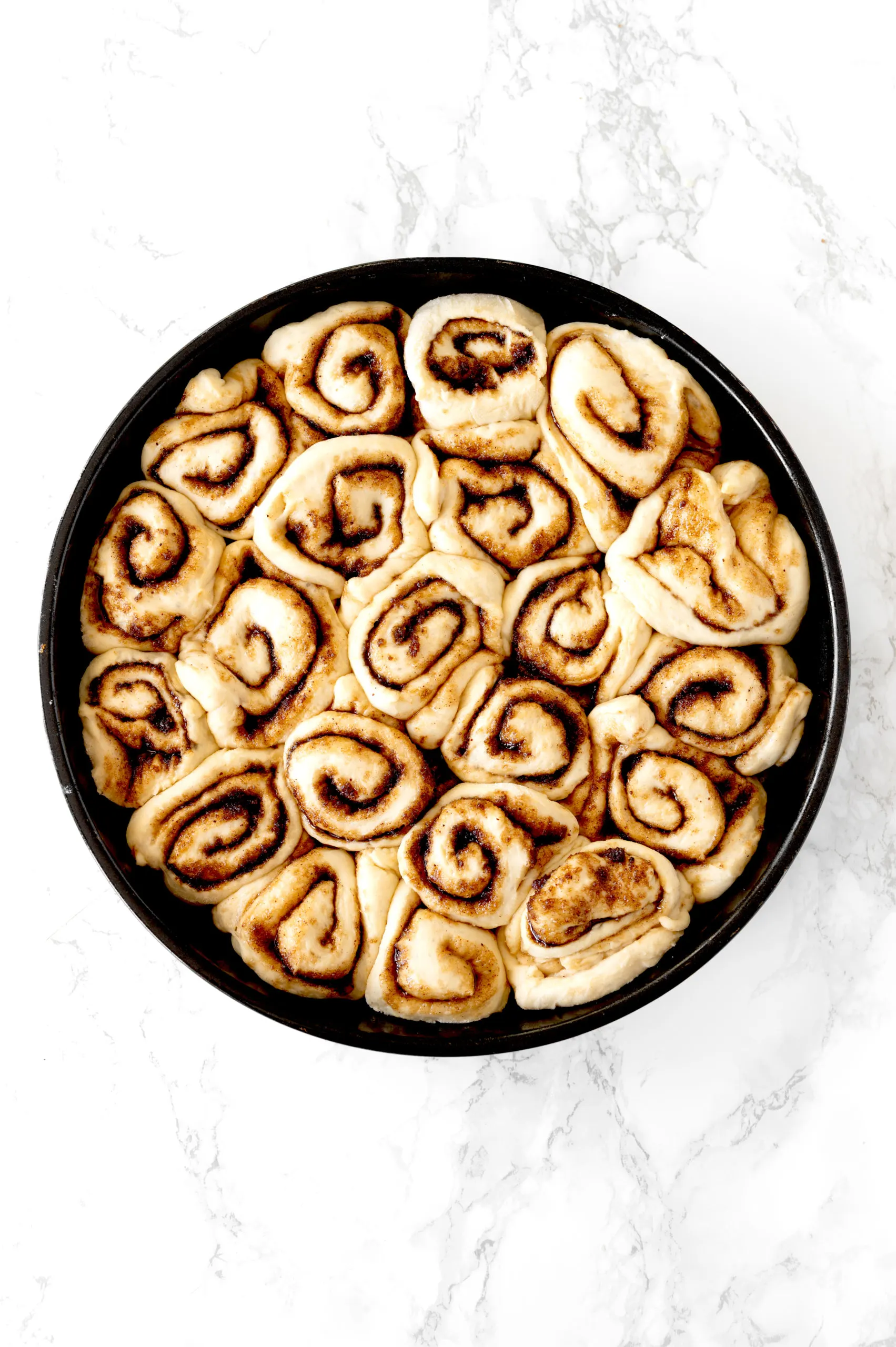
BROWN SUGAR
What we call brown sugar is essentially white sugar that has had molasses added back to it.
It should not be confused with raw sugar or demerara, which are their own types of sugar.
You can easily substitute brown sugar or even make brown sugar.
Both dark and light brown sugar can easily be made at home if you have a little white sugar and molasses.
It is commonly used in chocolate chip cookie recipes, and it’s rare for a recipe that calls for brown sugar not to also call for white sugar as well.
When a recipe calls for “brown sugar” but doesn’t specify what type (light or dark), it is referring to light brown sugar.
DARK BROWN SUGAR
Dark brown sugar can be made with 1 cup white granulated sugar and 2 tablespoons molasses.
Add both ingredients into a bowl and mix with a fork until completely mixed.
LIGHT BROWN SUGAR
Light brown sugar can be made with 1 cup white granulated sugar and 1 tablespoon molasses.
Add both ingredients into a bowl and mix with a fork until completely mixed.
DEMERARA
Demerara is popular in Israel and is easier to find than light brown sugar. It is a type of cane sugar with a nice toffee flavor and can be used in place of brown sugar.
HOW TO SUBSTITUTE DARK AND LIGHT BROWN SUGAR
DARK BROWN SUGAR
Dark Brown Sugar can be made with 1 cup of light brown sugar and 1 tablespoon molasses.
Add both ingredients into a bowl and mix with a fork until completely mixed.
LIGHT BROWN SUGAR
Light Brown sugar can easily be replaced in a recipe with half dark brown sugar and half white granulated sugar.
DOES THE TYPE OF BROWN SUGAR YOU USE REALLY MATTER?
Using the wrong brown sugar will change the flavor and likely the color.
Dark brown sugar has more molasses, which will give it a deeper, more complex flavor that’s closer to toffee or caramel.
Light brown sugar is more subtle, which is sometimes ideal.
However, I tend to use what's on hand, which for me means dark brown sugar in Israel and light brown in the States.
I also happen to love the extra flavor dark brown sugar gives, so I like using it even if I have both on hand.
How to Store Brown Sugar
Store brown sugar in an airtight container to maintain its moisture and prevent it from hardening.
Adjusting for a Convection Oven
Convection ovens blow the hot air around, producing around 25 to 30 percent more heat.
Since convection ovens produce more heat, you need either lowering the temperature or shortening the cooking time to compensate.
When recipes specify temperatures and cooking times, it’s for conventional ovens, unless specified otherwise.
A simple rule to follow is to lower the temperature by 25ºF or 14ºC when baking cookies and pies, and 50ºF or 28ºC when roasting meat and poultry. Some convection ovens offer separate settings for baking and for roasting.
You can also leave the temperature the same and instead, shorten the cooking time by 25 percent. For example, if your recipe calls for 60 minutes in the oven, check the food after 45 minutes instead.
However, keep in mind, some convection ovens actually make a heat adjustment for you. That is, if you set a convection oven for 350ºF, it might actually set itself to 325ºF to compensate. So, check your manual before making adjustments.
HOW TO HALVE THIS RECIPE
If you halve the recipe, you will need an 8-inch square baking pan.
The area of a square or rectangular pan is calculated by multiplying one side by the other side. This recipe calls for an 9 x 13-inch rectangular pan so a 9 x 13 = 117 square inches where an 8 x 8 = 64 square inches.
So, if you halve 117 it comes out to 58.5 square inches, which is close enough to 64 square inches.
TROUBLESHOOTING Dairy Free Cinnamon Rolls
WHY IS IT TAKING LONGER THAN DESCRIBED TO BAKE?
Overtime, the thermostat on ovens gets a little off, causing some ovens to run hot and others to run cool.
This is why recipes tend to say things like “10 to 15 minutes or until golden brown.”
So, if it takes you longer than expected that’s fine, don’t worry about it. Just keep baking until ready.
WHY DID MY RECIPE COME OUT TOO DRY?
Just like some ovens run cool, others run hot. If your oven runs hot, bake these at a lower temperature. Ideally, you should get an oven thermometer to know what temperature you’re really baking at.
HOW TO STORE Dairy Free Cinnamon Rolls
Cover cinnamon rolls tightly with plastic wrap. This will preserve the cinnamon rolls for two days at room temperature.
To preserve them for up to a week: refrigerate the cinnamon rolls in a sealed plastic bag with as much air removed as possible.
How to freeze Dairy Free Cinnamon Rolls
To freeze, let glazed cinnamon rolls cool. store inside of a heavy-duty freezer bag and squeeze out the excess air before sealing.
They can freeze for up to 2 to 3 months. After that time, they will still be safe to eat but their quality will begin to degrade.
When ready, thaw in the refrigerator the night before you want to serve the rolls.
The next morning, preheat your oven to 325°F or 160°C and reheat them for 5 to 10 minutes or until warm. Glaze and serve.
MY SNAFU:
My only trouble with this recipe was the glaze.
First, I thinned it out too much, then I put it while the rolls were still hot so it kind of melted.
Both of these gave me a kind of doughnut glaze.
Then I tried to put in less water or dairy free milk, but that made it nearly impossible to mix.
In the end, I added a quarter teaspoon extra at a time until I got it just right.
I will say though, even too thin it tasted amazing!
Dairy Free Cinnamon Rolls Tip:
While I used a sharp chef’s knife to cut the roll into slices, you can also use flavorless dental floss for easy cutting.
If you don't want to take the time to chill the dough, lightly oil your rolling pin so the dough doesn't stick.
Also, for a thin glaze, add another spoon or two of water.
Dairy Free Cinnamon Rolls
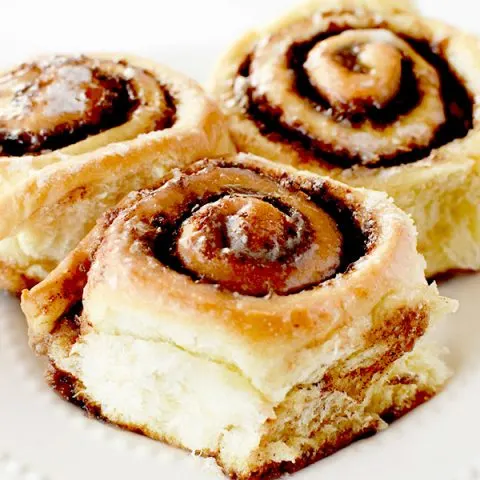
These cinnamon rolls are fluffy, moist, and delicious!
Ingredients
Dough
- 1 cup warm water (240 milliliters)
- 1 tablespoon instant dry yeast
- 2 tablespoons white sugar
- 3 tablespoons oil
- 1 egg
- 1 teaspoon salt
- 3 cups all-purpose flour (360 grams)
Filling
- 1 cup brown sugar, packed (210 grams)
- 2 tablespoons cinnamon
- ¼ cup oil* (60 milliliters)
Glaze
- 1 and ½ cups powdered sugar (175 grams)
- 3 tablespoons hot water or warm dairy free milk
Instructions
- Pour warm water, yeast, and sugar into the bowl of a stand mixer. Let sit for a few minutes until the yeast is activated and frothy.
- Add oil, egg, salt, and flour. Knead using the dough hook until the dough is smooth but sticky.
- Cover the bowl with a damp towel and put in a warm place. Let it rise until it's doubled in size.
- Optional: Chill for about half an hour, making it easier to roll out.
- Punch (press) the dough down. Then, remove and place it on a lightly floured surface and roll the dough out into a large rectangle.
- In a mixing bowl, combine brown sugar and cinnamon.
- Lightly pour the oil on the dough and brush it out. Then, sprinkle the cinnamon sugar mixture over it as evenly as possible.
- From the longer side, roll the dough tightly. Then, cut the roll into 12 pieces and place the pieces in a parchment paper lined 9×13 baking pan.
- Cover with a damp towel and put in a warm place. Let it rise until it is about double in size.
- Preheat your oven to 350°F or 175°C. When it is fully heated, place the pan in the oven and bake for 20 minutes or until it begins to brown slightly. Remove the pan from the oven and let it cool.
- Combine the confectioners' sugar and water and mix until you have a nice, thick, smooth glaze. If it is too thick, add more water a ¼ teaspoon at a time until you achieve the desired consistency.
- When the cinnamon rolls are completely cool, spoon the glaze over the rolls. Best served at room temperature.
Notes
A great trick when working with dough is to put a little oil on your hands to prevent it from sticking.
Nutrition Information:
Yield:
12Serving Size:
1Amount Per Serving: Calories: 307Total Fat: 11gSaturated Fat: 1gTrans Fat: 0gUnsaturated Fat: 9gCholesterol: 17mgSodium: 206mgCarbohydrates: 48gFiber: 2gSugar: 22gProtein: 5g
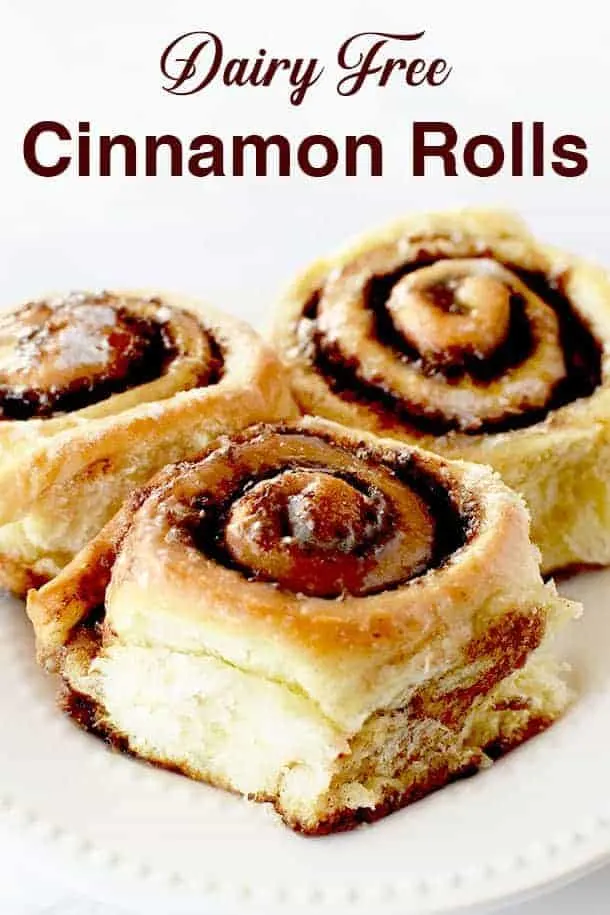
Stephanie
Monday 16th of December 2024
How long does it usually take to double in size? An hour?
ElissaBeth
Tuesday 17th of December 2024
It depends on the temperature of the room you have it in. Often it's about 45 minutes to an hour.
Breanna
Thursday 17th of August 2023
Is it possible to substitute the egg with a flax egg?
ElissaBeth
Wednesday 6th of December 2023
I haven't personally tried it but I know that people do it so I don't see why it wouldn't work :)
Monday 26th of June 2023
Can I make these without a mixer?
ElissaBeth
Friday 4th of August 2023
Sure, you can kneed them by hand if you prefer
April
Saturday 24th of December 2022
Will the dough rise in the fridge? For the first rise, I thought I'd just put it in the fridge for a few hours. My plan is to make these tomorrow, then bake them Christmas morning, so the dough would be in the fridge for the afternoon, then I'd prepare the unbaked rolls in the evening and put them in the fridge overnight.
April
Tuesday 27th of December 2022
@ElissaBeth, Thank you for your reply! I just followed the directions, and baked them that day, then reheated them today. I intended to reheat them yesterday-the day after baking them, but plans got changed. They were still wonderful. Thank you, again!
ElissaBeth
Monday 26th of December 2022
You can let them rise for the first rise in the fridge. However, dough rises very slowly in the fridge so I don't think you'll see much of a difference if it's in for only a few hours. If you let them rise in the fridge for the second rise they may get misshapen.
Taryn
Saturday 26th of November 2022
These are delicious! So thankful for dairy free cinnamon rolls! My son and husband loved them! Even did the first rise overnight like you shared in the comments! Your recipes are amazing! Thank you!
ElissaBeth
Sunday 27th of November 2022
You’re very welcome! I am so glad to hear that you and your family enjoyed them :)